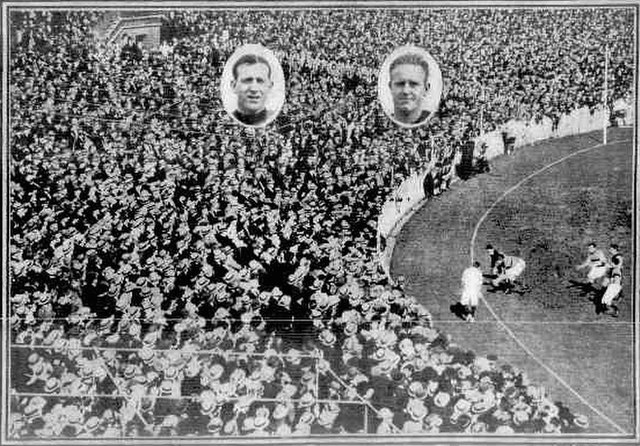VFL/AFL pre-season competition
In the Australian Football League (AFL), previously the Victorian Football League (VFL), the pre-season competition, known during its history by a variety of sponsored names and most recently as the NAB Cup, was an annual Australian rules football tournament held amongst clubs prior to the premiership season between 1988 and 2013. The pre-season competition culminated annually in a grand final and pre-season premier.
2007 NAB Cup trophy won by the Carlton Football Club
Australian Football League
The Australian Football League (AFL) is the pre-eminent and only fully professional competition of Australian rules football. It was originally named the Victorian Football League (VFL) and was founded in 1896 as a breakaway competition from the Victorian Football Association (VFA), with its inaugural season in 1897. It changed its name to Australian Football League in 1990 after expanding its competition to other Australian states in the 1980s. The AFL publishes its Laws of Australian football, which are used, with variations, by other Australian football organisations.
The final standing of the 1896 VFA ladder. Collingwood, Essendon, Fitzroy, Geelong, Melbourne, South Melbourne, Carlton and St Kilda would form the VFL the following year.
Essendon won the inaugural VFL premiership by finishing on top of the 1897 round robin finals ladder. A new finals system was implemented during the 1898 VFL season in order that a final match, or "grand final", determine the premiers.
In 1924, Footscray, the premiers of the VFA, defeated Essendon, the VFL premiers, in the Championship of Victoria. The result played a large part in Footscray, Hawthorn and North Melbourne gaining entry into the VFL the following year.
Luke Hodge, the first pick in the 2001 AFL draft. Hodge has played the most VFL/AFL games of any number-one draft pick (346 games played), is the only number-one draft pick to win a Norm Smith Medal, is one of just three number-one draft picks to have won a premiership, and has won the most premierships of any number-one draft pick (4)





